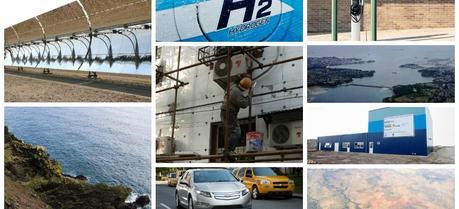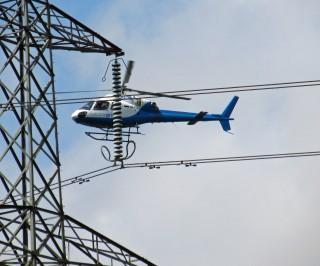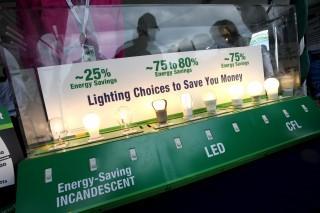
Global renewable energy share can double by 2030, China can cut its energy use by 22%, several studies look into the future of electric and fuel cell vehicles, the prospects look good for solar energy in the Middle East, North Africa and Australia. We have collected all these stories and more of the most important energy news of the past month conveniently in one place for you to read.
This month’s trending topics
Environment Energy policy Energy economics
Wind energy Solar cell Natural gas Information technology Energy storage Energy efficiency Battery
Solar energy Hydrogen production Electrical grid Electric vehicle
Renewable Energy
The global renewable energy share can reach and exceed 30 per cent by 2030 at no extra cost, the International Renewable Energy Agency (IRENA) says in a report, REmap 2030, that was published recently. The study maps out a pathway for doubling the share of renewable energy in the global energy mix. Energy efficiency and improved energy access can advance the share of renewables in the global energy mix up to 36 per cent, according to the new report.
In China, according to a study by the Department of Energy’s Pacific Northwest National Laboratory, changes to the building codes alone could cut building energy use country by 22%. Already home to almost one-fifth the world’s population, China has much to gain from improving codes for new urban-residential and commercial buildings—a 13 percent cut in building energy demand by the end of the century. China can accomplish this goal if it continues its current rate of improvements and could cut another 9 percent by adding rural buildings to mandatory new-building codes.
Solar Power
In keeping with the cliché, the perspectives for solar power are quite bright. According to a new report by the Middle East Solar Industry Association, the Middle East and North Africa (Mena) region could see more than $50 billion worth of investment in its solar power sector by 2020 as regional governments push for the adoption of clean energy and take advantage of the region’s high solar irradiation levels. The contribution of solar power to the energy mix will change radically over the next seven years—a MEED Insight survey concludes that the MENA solar energy capacity could grow to 15,000 MW by the end of 2020, split equally between photovoltaic (PV) and concentrating solar power (CSP) technologies.
The most popular posts in January, 2014
1. Graphene Can Replace Indium Tin Oxide in Solar Cells
2. Construction Begins on Australia’s Largest Utility-Scale Solar Project
3. First Salinity Gradient Power Station to Open Next Month
4. Energy-Dense Sugar Battery Developed at Virginia Tech
5. Bacteria Generates Electricity From Water Evaporation
Meanwhile, First Solar started the construction of Australia’s largest utility-scale solar project, a 250 hectare solar plant in Nyngan, New South Wales (NSW). Expected to be completed in mid-2015, the project will produce 102 MWAC—enough electricity to power more than 33,000 average NSW homes. This is a part of a larger155 megawatt, $450 million plan to create Australia’s largest solar power plants—a 102 MWAC solar plant at Nyngan and a 53 MW solar project at Broken Hill.
Electric Cars
In January, several studies looked at the prospects for electric vehicles, with somewhat mixed results.
A study by the Joint Research Center (JRC), the EU in-house scientific service, identified the possible lead markets for electric vehicles and hydrogen fuel cell vehicles in the European Union. In a business-as-usual scenario, in 2020 the experts envisage only a few insular lead markets for electric vehicles and a relatively limited number of more connected lead market regions in 2030. The research also showed that, already in the 2020 to 2030 timeframe, technology learning effects can lead to acceptable payback periods for electric drive vehicles owners.
Another study, this time from North Carolina State University, indicates, however, that even a sharp increase in the use of electric drive passenger vehicles (EDVs) by 2050 would not significantly reduce emissions of high-profile air pollutants carbon dioxide, sulfur dioxide or nitrogen oxides in the US. The researchers ran 108 different scenarios in a powerful energy systems model to determine the impact of EDV use on emissions between now and 2050. They found that, even if EDVs made up 42 percent of passenger vehicles in the U.S., there would be little or no reduction in the emission of key air pollutants.
But there is still some good news for electric car owners. In a new study, Carnegie Mellon University researchers found that optimally varying the charging speed of plug-in electric vehicles (EVs) can cut the cost of generating electricity to charge these vehicles in half. It is already cheaper to charge an electric vehicle than fill up a gasoline vehicle, but allowing grid operators to control electric vehicle charging speed could reduce these costs further. We see additional savings up to $70 per vehicle each year or even higher for systems that expect new power plant construction and systems with a lot of wind power. Although the researchers warn that more study is needed to understand all the implications of controlling electric vehicle charging.
Marine Energy
The last month saw some developments in the field of marine energy. In the Netherlands, researchers are getting ready to launch the first salinity gradient power station in the world that works on the basis of transporting ions. This pilot power station is an important interim step between the research in the laboratory and a commercial power station. According to the researchers, you could generate electricity for 80% of the households in the Netherlands just from the water that flows into the sea via the Dutch part of the Rhine. And worldwide you could use blue energy to total amount of electricity consumed.
Salinity gradient power is not the only abundant marine energy source. Researchers from Oxford University’s Department of Engineering Science and the School of Engineering at the University of Edinburgh have found that renewable tidal energy, sufficient to power about half of Scotland, could be harnessed from a single stretch of water off the north coast of the country. According to them, tidal turbines placed in the Pentland Firth, between mainland Scotland and Orkney, could generate about 1.9 gigawatts (GW) of electricity.
Earlier in January we reported, however, that the predicted energy gains from certain tidal energy schemes have been overestimated, according to a team of researchers in Liverpool.
This month in photos: January 2014

A 498-part model of the ITER reactor from Lego pieces. (Credit: Andrew Clark)

One of Rao’s micro-windmills is placed here on a penny. (Credit: University of Texas at Arlington)

Collisions with overhead power lines alone account for 10 per cent of aviation accidents in Norway. (Credit: Flickr @ David Wright http://www.flickr.com/photos/dhwright/)

Ford C-MAX Solar Energi Concept. (Credit: Ford Motor Company)

Sandia National Laboratories physicist Thomas Awe examines coils that reduce plasma instabilities in the quest for controlled nuclear fusion at Sandia’s Z machine. (Credit: Randy Montoya / Sandia National Laboratories)

The public learns about energy efficient light bulb options in the exhibit tent at the U.S. Department of Energy Solar Decathlon 2011. (Credit: Stefano Paltera / U.S. Department of Energy Solar Decathlon)

